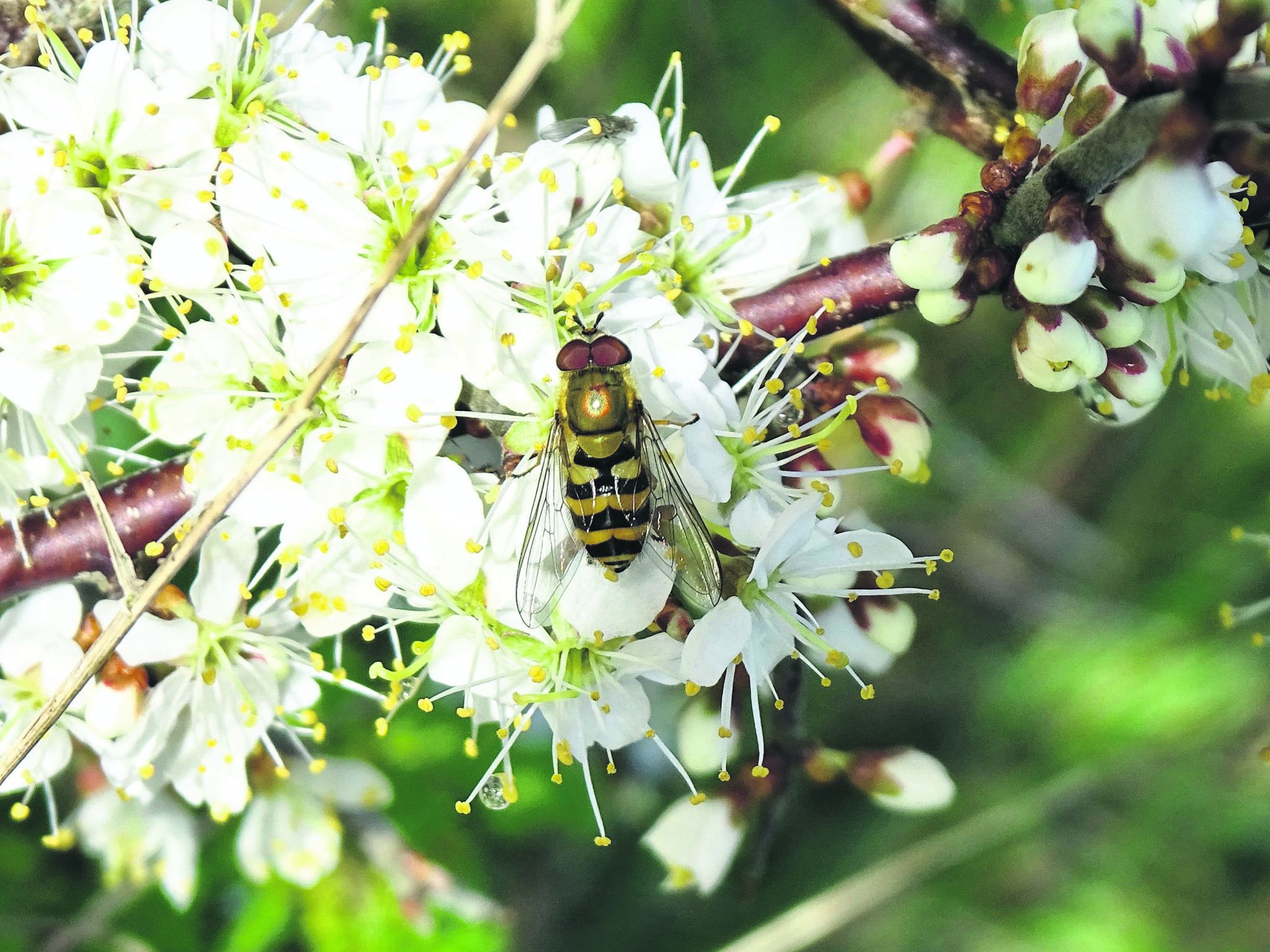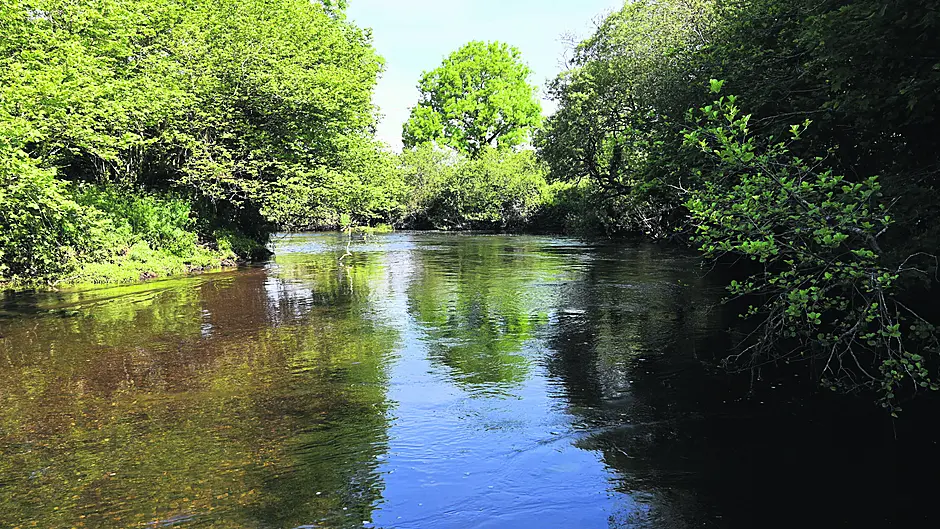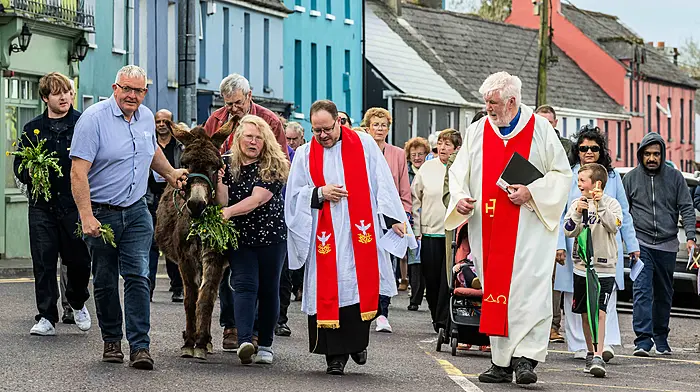BY ANN HAIGH
NOW that it is the start of May, most of the deciduous trees are joining the evergreens and have come out in leaf and flower. It is a joy to see bees feeding on willow, the pretty display of blossom on blackthorn and crab apple and the buds on elder giving promise of the flowers to come.
Native Irish trees
According to the National Parks and Wildlife Service, we have a definite 35, possibly 36, species of native and naturally occurring trees. Familiar names include oak, alder, hazel, holly, hawthorn and rowan. Included on the list, are four species of willow, two species of birch, two species of cherry tree and three native conifers; Scot’s pine, juniper and yew.
A lesser-known native Irish tree is the strawberry tree which is also an evergreen. This pretty tree is unusual as unlike most of our other trees, it is not a native tree in Britain and is only considered native in the south west of Ireland and the Mediterranean. In the wild it can be found in Killarney National Park and Glengarriff woods. Unfortunately, despite its name, the berries, while edible, are not particularly palatable, but by virtue of being bright red when mature they give the tree its common name.
Importance of trees
Trees are vital to life on earth. By the process of photosynthesis, they draw carbon dioxide from the air and release oxygen, making them the lungs of the planet and they regulate the atmosphere. This is important to maintain oxygen levels for us to breathe and to mitigate the buildup of carbon dioxide emissions that trap heat from the sun and drive global warming.
They provide food and shelter for many species of birds, mammals, insects and other invertebrates. Oak trees, for one example, are wonderful trees and according to the National Biodiversity Data Centre can live up to 1,000 years and support 284 different insect species and 324 lichen species.
Trees live in intricate and delicate balance with fungi and lichens, which in turn sustain the ecosystem. Fungi that are associated with trees are crucial for optimal soil health.
Beside waterways
Regarding our lakes, rivers and streams, waterside trees provide shade which is important to manage water temperature and control excess light. Unshaded waterways are more prone to algal overgrowth. Trees also provide a buffer zone to help capture pollution and help prevent run-off from land entering the waterway. Risk of flooding is also curbed by riverside trees by slowing the surge of water into rivers during periods of heavy rain. This reduces the likelihood of rivers bursting their banks.
Trees also hold the soil in place along river banks, reducing erosion and therefore help to keep sediment at healthy levels which is important for water quality. Lastly, materials cast from trees into the river, such as small twigs and leaves provide nutrition for the invertebrates which are the foundation of the ecosystem, and in turn are food for fish and birds such as dippers.
Forest cover
By studying pollen from peat, it has been possible to estimate that 6,000 years ago 80% of Ireland was covered by trees. To put this into something more visual, it is often said that the extent of the tree cover meant that a squirrel could move from one end of Ireland to the other without touching the ground. Since then, trees have been progressively cut down and forests cleared to accommodate humans, for land to farm, timber for construction and for fuel. By the end of the 19th century only 1% of land was covered by forest, but since then this figure has risen to 11.4% in 2020. However, according to the latest national survey of native woodland published in 2008 only 1.25% of land cover is native woodland. To ensure the full benefits that trees bring to the environment and ecosystem, it is not just important to simply have tree cover, but these trees need to represent the diverse tree types of our native species and be the right trees for the right habitat to support the broadest spectrum of biodiversity.
 It is a joy to see bees, or the pictured hoverfly, feeding on on blackthorn. (Photo: Ann Haigh)
It is a joy to see bees, or the pictured hoverfly, feeding on on blackthorn. (Photo: Ann Haigh)
Threats to trees
Trees also face serious issues such as disease, pests and competition from invasive species such as rhododendron and cherry laurel.
Most of us remember the dread of the words ‘Dutch elm disease.’ A fungal infection that first arrived in the 1970s and is spread by bark beetles. It wiped out most of our native wych elms. We are now in the middle of another wave of infectious spread, this time affecting ash trees. Ash dieback is also caused by a fungus, but this time spread is airborne via fungal spores, which can travel for miles between trees. This is a serious disease, threatening not only the survival of the ash species in Ireland but also the various invertebrate species that depend on it. Teagasc is carrying out research with the aim of selective breeding and propagation of ash trees with natural genetic resistance to the disease.
It’s impossible to cover in one article all the ways that native trees interact with the environment around them. However, I would urge you to get out there and simply enjoy trees for the natural beauties they are.
• Ann Haigh MVB MSc MRCVS is a Skibbereen resident, a mum-of-two and a veterinarian with a masters in wildlife health and conservation and she is passionate about biodiversity and nature.







